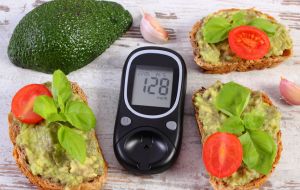Iron-Deficiency Anemia

About This Condition
Anemia is a reduction in the number of red blood cells (RBCs); in the amount of hemoglobin in the blood (hemoglobin is the iron-containing pigment of the red blood cells that carry oxygen from the lungs to the tissues); and in another related index called hematocrit (the volume of RBCs after they have been spun in a centrifuge). All three values are measured on a complete blood count, also referred to as a CBC. Iron-deficiency anemia can be distinguished from most other forms of anemia by the fact that it causes RBCs to be abnormally small and pale, an observation easily appreciated by viewing a blood sample through a microscope.
Iron deficiency also can occur, even if someone is not anemic. Symptoms of iron deficiency without anemia may include fatigue, mood changes, and decreased cognitive function. Blood tests (such as serum ferritin, which measures the body’s iron stores) are available to detect iron deficiency, with or without anemia.
Iron deficiency, whether it is severe enough to lead to anemia or not, can have many non-nutritional causes (such as excessive menstrual bleeding, bleeding ulcers, hemorrhoids, gastrointestinal bleeding caused by aspirin or related drugs, frequent blood donations, or colon cancer) or can be caused by a lack of dietary iron. Menstrual bleeding is probably the leading cause of iron deficiency. However, despite common beliefs to the contrary, only about one premenopausal woman in ten is iron deficient.1 Deficiency of vitamin B12, folic acid, vitamin B6, or copper can cause other forms of anemia, and there are many other causes of anemia that are unrelated to nutrition. This article will only cover iron-deficiency anemia.
Symptoms
Some common symptoms of anemia include fatigue, lethargy, weakness, poor concentration, and impaired immune function. In iron-deficiency, fatigue also occurs because iron is needed to make optimal amounts of ATP—the energy source the body runs on. This fatigue usually begins long before a person is anemic. Said another way, a lack of anemia does not rule out iron deficiency in tired people. Another symptom of anemia, called pica, is the desire to eat unusual things, such as ice, clay, cardboard, paint, or starch. Advanced anemia may also result in lightheadedness, headaches, ringing in the ears (tinnitus), irritability, pale skin, unpleasant sensations in the legs with an uncontrollable urge to move them (restless legs syndrome), and getting winded easily.
Copyright © 2026 TraceGains, Inc. All rights reserved.
Learn more about TraceGains, the company.
The information presented by TraceGains is for informational purposes only. It is based on scientific studies (human, animal, or in vitro), clinical experience, or traditional usage as cited in each article. The results reported may not necessarily occur in all individuals. Self-treatment is not recommended for life-threatening conditions that require medical treatment under a doctor's care. For many of the conditions discussed, treatment with prescription or over the counter medication is also available. Consult your doctor, practitioner, and/or pharmacist for any health problem and before using any supplements or before making any changes in prescribed medications. Information expires December 2026.














